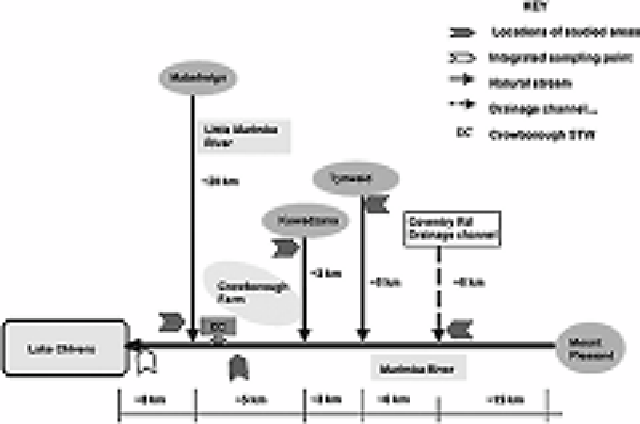Environmental Engineering Reference
In-Depth Information
Figure 12.3. Scheme of the Marimba
River catchment.
It could be assumed that the control point of the Kuwadzana stream represents the
background quality for the Marimba River (Chapter 5), as it is similar to the background
parameters in other points of the Manyame catchment (Hranova et al. 2002). The
comparison with this point shows that the major polluting parameters are phosphorous,
ammonia, dissolved solids, and selected metals as Pb, Ni and Cd. The comparison of the
different sources with respect to metal concentrations show that their contribution is more
significant with respect to storm water, but is not well pronounced with respect to the
farm. The contribution of the farm with respect to surface runoff and impacts to Marimba
River (Chapter 8) was significant during the beginning of the rain season with respect to
Ni and Cd only.
In terms of an integrated assessment of the pollution load contributed from the
catchment to Lake Chivero, the integrated sampling point shown on Figure 12.3 is very
important, as it is provided with an existing discharge measurement device, and allows
the simultaneous control of flow rates and qualitative parameters. Its inclusion in a future
model for the evaluation and assessment of diffuse pollution in this relatively small
catchment is essential.
The water quality variation in two other urban streams is presented in Chapter 11. The
major pollution source of Lilongwe River was related to informal settlements and
possible pollution from industrial enterprises. The water quality of Mbabane River was
seriously affected by the malfunctioning of the municipal wastewater treatment plant. A
more detailed analysis of the major pollution sources is made in the subsequent section.

